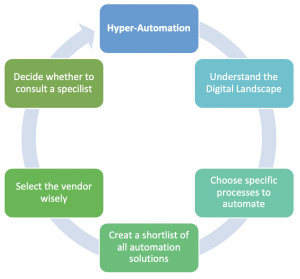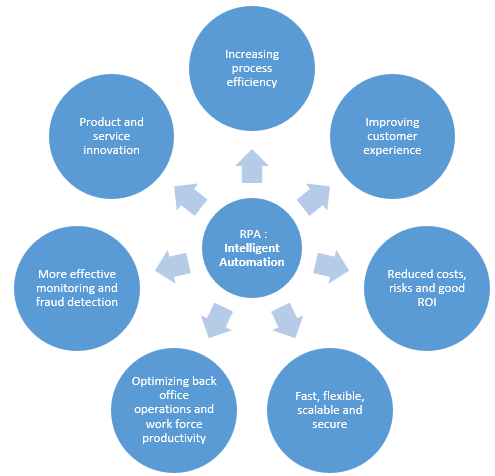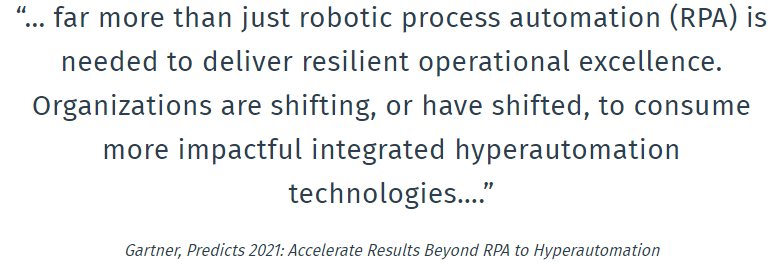How machine learning and artificial intelligence are changing RPA’s Landscape
Robotic Process Automation (RPA) is a technology that allows software robots to automate repetitive and rule-based tasks, such as data entry, processing transactions, and generating reports. The integration of ML and AI with RPA has taken the industry by storm. This dynamic combination is revolutionizing the way businesses operate, making processes faster and more efficient than ever before. ML & AI are being used in RPA to streamline processes to reduce costs, increase productivity, enhance RPA’s capabilities, and enable it to perform more complex tasks.
There are diverse types of RPA solutions available on the market, each with its own unique capabilities. Below are some of the most popular RPA solutions and their capabilities:
- Automation Anywhere: Offers both web-based and desktop-based bots. Capabilities include screen scraping, data manipulation, file transfer, workflow automation, etc.
- Blue Prism: Provides desktop-based bots that can be deployed on-premises or in the cloud. Capabilities include process mining, exception handling, automatic documentation generation, etc.
- UiPath: Offers both web-based and desktop-based bots. Capabilities include image recognition, natural language processing (NLP), process mining, etc.
How machine learning and artificial intelligence are boosting RPA
The use of ML and AI is helping to boost the capabilities of RPA, with both technologies working together to automate a wide range of processes. ML is being used to develop bots that can understand and respond to human interaction, making them more natural and efficient communicators. This is particularly useful in customer service applications, where bots can handle large volumes of inquiries without getting overwhelmed.
AI, on the other hand, is being used to create bots that can think for themselves and make decisions on their own. This is proving invaluable in more complex processes where humans may struggle to keep up with the pace. AI-powered bots can identify patterns and exceptions, meaning they can often solve problems faster and more effectively than their human counterparts.
With ML and AI capabilities, RPA bots can make more intelligent decisions based on data analysis, predictive analytics, and other advanced techniques. This can enable them to handle more complex tasks and make better recommendations. ML and AI can also help RPA bots to scale more effectively. This is particularly useful in high-volume environments where there is a need for rapid processing and analysis.
How to get started with machine learning and artificial intelligence in your RPA process
Machine learning and artificial intelligence are increasingly becoming essential components of RPA, enabling robots to learn from their mistakes and become more efficient as they process data. If you’re looking to get started with machine learning and artificial intelligence in your RPA process, there are a few things you need to do.
First, you need to identify what tasks in your process can be automated using ML & AI. You must also define the business problem you want to solve using ML and AI in your RPA process. This could be a task that requires more intelligence and decision-making than your current RPA bots can handle. Once you’ve identified those tasks, you need to find the right software solution that can help you automate them.
Also, to use ML and AI in your RPA process, you will need data to train your algorithms. Identify the data you need and where you can obtain it. There are many different ML algorithms to choose from, so choose the one that best suits your identified business problem and data. Use that data to train your ML algorithm. This involves feeding your algorithm with labeled data to help it learn and make predictions. Once your ML algorithm is trained, integrate it into your RPA process. This involves connecting your ML algorithm to your RPA bots and using it to automate more complex tasks.
Finally, you need to implement the automation solution and monitor its performance over time and refine it as necessary. ML and AI can help you automate more complex tasks if you continuously evaluate your RPA process and look for opportunities to improve efficiency, accuracy, and productivity. By following these steps, you can ensure that ML and AI will play a positive role in your RPA process.
Below are some examples of how ML & AI can be used in RPA:
- Natural Language Processing: NLP is used to extract and process data from unstructured text, such as emails and chat logs. RPA bots can use NLP to understand the intent of a user’s message and take appropriate actions based on the context.
- Computer Vision: Computer vision can be used to enable RPA bots to read and interpret images, such as screenshots of a user interface or a scanned document. This can be useful in automating tasks such as data entry and document processing.
- Predictive Analytics: ML algorithms can be used to analyze data and identify patterns that can help RPA bots make predictions and decisions. For example, an RPA bot could use predictive analytics to identify customers who are likely to churn and take proactive measures to retain them.
- Reinforcement Learning: Reinforcement learning can be used to train RPA bots to learn from their actions and improve their performance over time. This can be useful in tasks such as fraud detection, where the bot can learn from its mistakes and improve its accuracy over time.
With these examples in mind, it is clear that machine learning and AI will continue to play a key role in driving further innovation in the world of RPA. Remember that implementing ML and AI in your RPA process requires a solid understanding of both technologies. If you do not have the necessary skills in-house, consider contacting us to ensure that you will get the most out of your investment.







